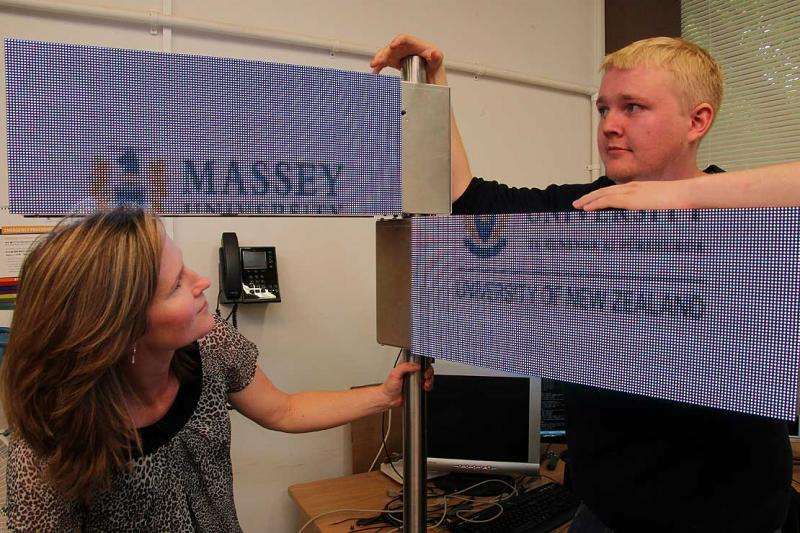A sign of the digital times

A team of Massey University engineers and computer scientists are revolutionising digital sign technology with the aim of making "finding your way" an interactive and personalised experience.
The project was to create a digital sign that could rotate and display different information according to where it was pointing. Computer scientists could then enhance the sign to make it "smart".
The idea came from Massey University digital content editor Katherine Huynh, who had seen a similar product available overseas.
"The sign would rotate around and, as it did, would display different information on a black and white display. It was fairly basic looking and I thought, with the skills and expertise available at Massey, we could make something better."
Fourth year mechatronics student Tobin Hall took on the challenge of building and programming the sign.
A single-board computer running a Linux based operating system controls what the sign displays on an array of light emitting diodes (LEDs). A brushed motor controls the rotation of the sign around a fixed base and the position of the arms is recorded by an encoder at the base of the motor. This allows Mr Hall to map an angle to a location and relay that through the encoder.
"Doing a mechatronics degree, you gain knowledge in all aspects of engineering that relate to the project, so I had knowledge in computer systems engineering, micro-controller programming and mechanical and electrical engineering – all which were needed to make it work"
School of Engineering and Advanced Technology chair of computer science Professor Hans Guesgen was able to bring his expertise of smart technologies and the "internet of things" to the fore and plan the future development of the sign.
"People are becoming more comfortable interacting with their devices and other technology around them. You can even connect with your washing machine remotely now," he says.
"Most of these interactions are initiated by us but more frequently devices will initiate their own communication and will intelligently interact with us and other devices.
"This could happen through what Google calls a 'URIBeacon'. You could install a beacon on the sign that would use Bluetooth to transmit a request to a user to interact with it. That request could be in the form of a web link or request to access an app on the users phone, giving users the chance to tell the sign exactly what information they want displayed."
As well as making the sign interactive, plans are underway to make it able to display Twitter, or other social media feeds.
Engineering programme director Associate Professor Gourab Sen Gupta says the project is an excellent example of the synergy between engineering and computer science.
"The sign is a very sophisticated computer in itself. Our computer engineers could then step in and expand the capabilities of the sign to make it an interactive experience for users."
Provided by Massey University












.jpg)







